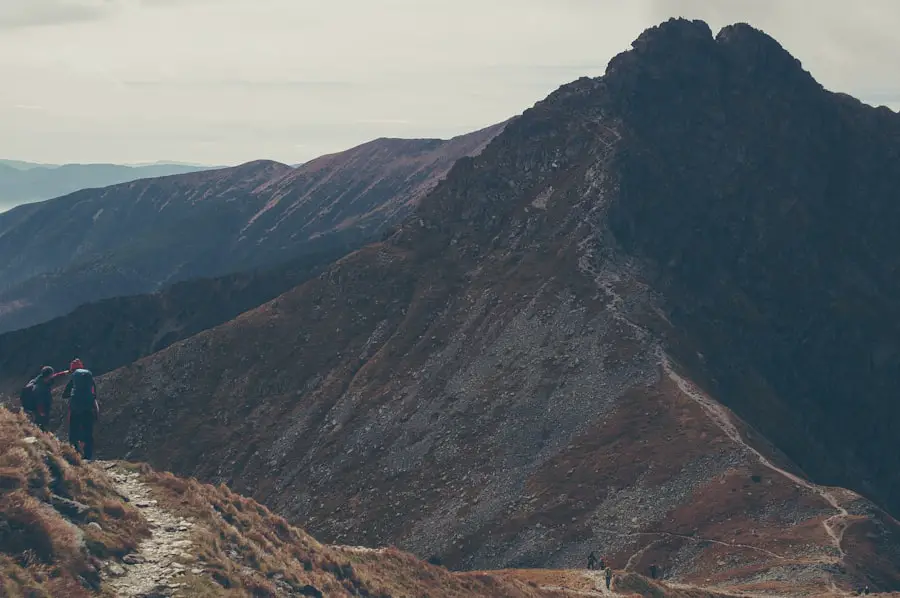The Great Pyrenees, also known as the Pyrenean Mountain Dog, is a majestic breed that has captured the hearts of dog lovers around the world. Originating from the mountainous regions of France and Spain, these dogs were historically bred to guard livestock against predators such as wolves and bears. Their impressive stature, thick double coat, and gentle demeanor make them not only excellent guardians but also beloved family companions.
The breed’s history is steeped in tradition, with roots that trace back thousands of years, showcasing their resilience and adaptability to harsh environments. As a breed, Great Pyrenees are known for their loyalty and protective instincts. They possess a calm and dignified presence, often displaying a gentle disposition towards children and other animals.
This combination of traits makes them suitable for various roles, from working dogs to family pets. However, their size and strength require responsible ownership and training. Understanding the unique characteristics of the Great Pyrenees is essential for anyone considering adding one to their family, especially for those who enjoy outdoor activities like hiking.
Key Takeaways
- Great Pyrenees are large, majestic dogs known for their gentle and protective nature, making them great companions for hiking and outdoor activities.
- With their thick double coat, strong build, and impressive size, Great Pyrenees are well-suited for outdoor adventures in various terrains and weather conditions.
- Great Pyrenees are known for their calm and patient demeanor, but they can also be independent and strong-willed, requiring consistent training and socialization for hiking and outdoor activities.
- When hiking with Great Pyrenees, it’s important to consider their size, strength, and endurance, as well as potential health and safety concerns such as overheating and joint issues.
- Proper training, socialization, and the right gear and equipment are essential for hiking with Great Pyrenees, ensuring a safe and enjoyable experience for both the dog and the owner.
Physical Characteristics of Great Pyrenees
The Great Pyrenees is an imposing breed, typically weighing between 85 to 115 pounds and standing 25 to 32 inches tall at the shoulder. Their large, muscular build is complemented by a thick, weather-resistant double coat that can be predominantly white or have markings in shades of gray, tan, or badger. This coat serves a dual purpose: it protects them from harsh weather conditions while also providing insulation against cold temperatures.
The outer layer is long and coarse, while the undercoat is soft and dense, making them well-suited for life in mountainous terrains. Their distinctive features include a broad head with a slightly rounded skull, dark eyes that convey intelligence and warmth, and a strong neck that supports their powerful frame. The ears are medium-sized and hang down close to the head, adding to their gentle appearance.
One of the most striking aspects of the Great Pyrenees is their plume-like tail, which curls over their back when they are alert or excited. This breed’s physical attributes not only contribute to its beauty but also play a crucial role in its ability to perform its historical duties as a livestock guardian.
Temperament and Behavior of Great Pyrenees

Great Pyrenees are renowned for their calm and gentle temperament. They are often described as affectionate and devoted companions who form strong bonds with their families. Despite their size, they tend to be quite gentle, especially with children, making them excellent family pets.
Their protective nature is deeply ingrained; they are instinctively wary of strangers and will not hesitate to defend their loved ones if they sense a threat. This combination of loyalty and protectiveness makes them exceptional guardians. However, it is essential to recognize that their independent nature can sometimes lead to stubbornness.
Great Pyrenees are not typically eager to please in the same way that some other breeds are; instead, they often think for themselves. This trait can pose challenges during training, as they may choose to ignore commands if they do not see the value in following them. Early socialization and consistent training are crucial in shaping their behavior and ensuring they develop into well-mannered companions.
Understanding their temperament is vital for anyone considering hiking with a Great Pyrenees, as it influences how they will respond to various situations encountered on the trail.
Considerations for Hiking with Great Pyrenees
| Considerations for Hiking with Great Pyrenees |
|---|
| 1. Size and Strength |
| 2. Coat and Weather |
| 3. Training and Socialization |
| 4. Health and Fitness |
| 5. Leash and Harness |
When contemplating hiking with a Great Pyrenees, several factors must be taken into account to ensure a safe and enjoyable experience for both the dog and the owner. First and foremost, their size and strength mean that they require ample space to move freely. While they can adapt to various environments, crowded trails may not be ideal for this breed, as they can become overwhelmed by too many people or other dogs.
Choosing less populated trails can help mitigate stress for both the dog and the owner. Additionally, Great Pyrenees are not built for speed; they are more suited for endurance activities. Their thick coats can also make them susceptible to overheating in warmer weather, so it’s crucial to plan hikes during cooler parts of the day or in shaded areas.
Hydration is another critical consideration; ensuring that your Great Pyrenees has access to fresh water throughout the hike will help prevent overheating and dehydration. Understanding these considerations will help create a positive hiking experience that respects the breed’s unique needs.
Training and Socialization for Hiking
Training and socialization are paramount when preparing a Great Pyrenees for hiking adventures. Early socialization should begin as soon as possible, exposing them to various environments, people, and other animals. This exposure helps them develop confidence and reduces the likelihood of fear-based reactions when encountering new situations on the trail.
Positive reinforcement techniques work best with this breed; rewarding desired behaviors with treats or praise encourages them to repeat those actions. Basic obedience training is also essential before embarking on hiking trips. Commands such as “sit,” “stay,” “come,” and “leave it” can be invaluable in managing your dog’s behavior on the trail.
Given their independent nature, consistency in training is key; regular practice will reinforce these commands and help establish a strong bond between owner and dog. Additionally, practicing leash manners is crucial since Great Pyrenees can be strong pullers when excited or distracted by wildlife or other hikers.
Health and Safety Concerns for Hiking with Great Pyrenees

Health considerations play a significant role in determining whether a Great Pyrenees is ready for hiking activities. Due to their size, they can be prone to certain health issues such as hip dysplasia, elbow dysplasia, and certain heart conditions. Regular veterinary check-ups are essential to monitor their overall health and address any potential concerns before hitting the trails.
It’s advisable to consult with a veterinarian about your dog’s fitness level and any specific precautions that should be taken based on their health history. Another important aspect of health and safety is awareness of environmental hazards on hiking trails. Great Pyrenees have thick coats that can make them susceptible to overheating; therefore, it’s crucial to monitor their temperature during hikes, especially in warmer weather.
Additionally, be vigilant about potential hazards such as sharp rocks or thorny plants that could injure their paws. Carrying a first aid kit specifically designed for dogs can provide peace of mind in case of minor injuries or emergencies while out on the trail.
Gear and Equipment for Hiking with Great Pyrenees
Selecting the right gear and equipment is vital for ensuring a successful hiking experience with a Great Pyrenees. A sturdy leash is essential; opt for one that is both durable and comfortable for your hand while providing enough length for your dog to explore safely without straying too far from you. A harness designed specifically for large breeds can offer better control than a traditional collar, reducing strain on their neck during walks or hikes.
In addition to leashes and harnesses, consider investing in protective gear such as booties for your dog’s paws. These can shield against rough terrain or extreme temperatures—whether hot pavement or icy trails—helping prevent injuries or discomfort during hikes. Hydration packs designed for dogs can also be beneficial; they allow you to carry water for both yourself and your Great Pyrenees while keeping your hands free for navigating trails.
Choosing the Right Trails for Great Pyrenees
Selecting appropriate trails is crucial when planning hikes with a Great Pyrenees. Given their size and strength, it’s best to choose trails that offer ample space for them to roam without feeling confined or overwhelmed by crowds. Look for trails that are less trafficked or those that allow dogs off-leash in designated areas; this will enable your dog to explore more freely while still being under your control.
Terrain is another important factor; while Great Pyrenees are capable of handling various landscapes, steep inclines or rocky paths may pose challenges due to their size and weight distribution. Opting for moderate trails with gradual elevation changes will provide an enjoyable experience without overexerting your dog. Additionally, consider the availability of water sources along the trail; having access to fresh water can help keep your Great Pyrenees hydrated during longer hikes.
Tips for Hiking with Great Pyrenees
When hiking with a Great Pyrenees, preparation is key to ensuring a smooth experience on the trail. One important tip is to start with shorter hikes before gradually increasing distance as your dog becomes more accustomed to the activity. This gradual approach allows you to gauge your dog’s stamina and comfort level while building their confidence on different terrains.
Another valuable tip is to maintain a steady pace throughout the hike. Great Pyrenees thrive on routine; keeping a consistent speed helps them manage their energy levels effectively. Be mindful of breaks—allowing your dog time to rest will prevent fatigue and overheating during longer hikes.
Lastly, always carry waste bags; being responsible pet owners means cleaning up after your dog helps maintain the natural beauty of hiking trails.
Other Outdoor Activities for Great Pyrenees
Beyond hiking, there are numerous outdoor activities that Great Pyrenees can enjoy alongside their owners. Swimming is an excellent option; many dogs love water, and swimming provides low-impact exercise that can be particularly beneficial for larger breeds like the Great Pyrenees. Always supervise your dog around water bodies and ensure they have a safe entry point.
Camping is another fantastic outdoor activity that allows you to bond with your Great Pyrenees while enjoying nature together. Many campgrounds welcome dogs, providing opportunities for exploration and relaxation in beautiful settings. When camping with your dog, ensure you have all necessary supplies—food, water, bedding—and create a comfortable space where they can rest after a day of adventure.
Are Great Pyrenees Good Hiking Dogs?
In summary, while Great Pyrenees may not be the first breed that comes to mind when considering hiking companions due to their size and independent nature, they can indeed make excellent hiking dogs with proper training, socialization, and preparation. Their calm demeanor combined with protective instincts allows them to navigate outdoor environments effectively when guided by responsible owners who understand their needs. With careful consideration of health concerns, appropriate gear selection, and choosing suitable trails, hiking with a Great Pyrenees can be an enriching experience for both dog and owner alike.
Their love for exploration paired with an innate sense of loyalty makes them wonderful companions on outdoor adventures—provided that owners take the time to prepare adequately for each outing.
If you are considering taking your Great Pyrenees hiking, you may want to check out this article on the best lightweight laptop for travel here. Having a lightweight laptop can make it easier to plan your hiking trips and keep track of your adventures with your furry companion.
FAQs
What are Great Pyrenees dogs known for?
Great Pyrenees dogs are known for their large size, gentle temperament, and protective nature. They were originally bred to guard livestock in the Pyrenees mountains of France and Spain.
Are Great Pyrenees good hiking dogs?
Yes, Great Pyrenees dogs are good hiking companions. They are strong and have a high endurance level, making them well-suited for long hikes. Their protective instincts also make them good at keeping watch over their owners during outdoor activities.
What should I consider before taking a Great Pyrenees hiking?
Before taking a Great Pyrenees hiking, it’s important to consider their size and coat. They have a thick double coat that can make them prone to overheating in hot weather, so it’s important to plan hikes in cooler temperatures and bring plenty of water for them.
How much exercise do Great Pyrenees dogs need?
Great Pyrenees dogs are a large and active breed that requires regular exercise to stay healthy and happy. They benefit from daily walks, hikes, and other forms of physical activity to keep them mentally and physically stimulated.
Do Great Pyrenees dogs get along with other animals while hiking?
Great Pyrenees dogs are known for their protective instincts, which can sometimes lead to them being wary of unfamiliar animals while hiking. Proper socialization and training can help them get along with other animals, but it’s important to monitor their interactions while on the trail.
